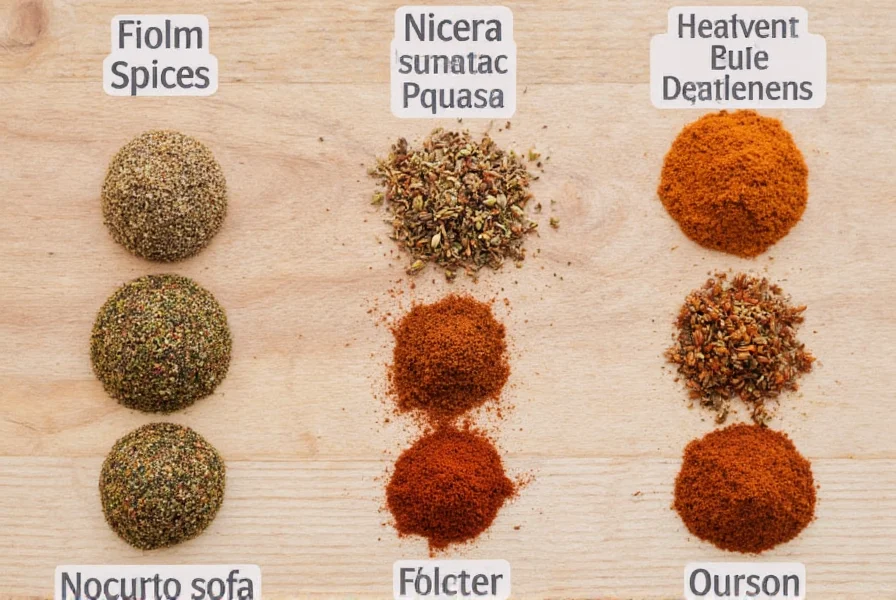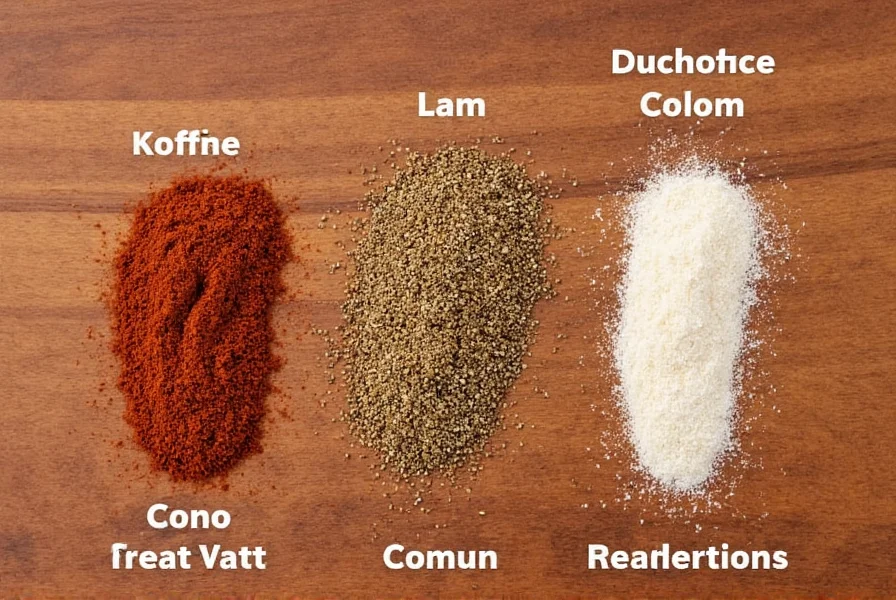Creating authentic kofta begins with understanding its essential seasoning components. This traditional spice mix transforms simple ground meat into flavorful Mediterranean and Middle Eastern delicacies. Unlike generic meat seasonings, kofta blends balance warm spices with aromatic herbs to create complex flavor profiles that stand up to grilling or baking.
Essential Components of Authentic Kofta Seasoning
The foundation of any quality kofta seasoning consists of several key spices working in harmony. Cumin provides earthy depth, while coriander adds citrusy brightness. Paprika contributes both color and mild sweetness, and cinnamon introduces warm complexity without overpowering. Allspice—despite its name—is crucial for that distinctive Middle Eastern flavor profile.

Traditional Spice Ratios for Perfect Balance
Getting the proportions right separates authentic kofta from ordinary seasoned meat. Professional chefs recommend these ratios for 1 pound of ground meat:
| Spice | Amount per Pound of Meat | Flavor Contribution |
|---|---|---|
| Ground Cumin | 1½ teaspoons | Earthy base note |
| Ground Coriander | 1 teaspoon | Citrusy brightness |
| Sweet Paprika | 1 teaspoon | Color and mild sweetness |
| Ground Cinnamon | ½ teaspoon | Warm complexity |
| Ground Allspice | ½ teaspoon | Distinctive Middle Eastern profile |
Regional Variations Across Cultures
Kofta seasoning differs significantly across regions, reflecting local palates and available ingredients:
- Levantine (Lebanon, Syria, Jordan): Features higher allspice content with added mint and parsley for fresh brightness
- Iranian: Incorporates saffron and dried lime for distinctive floral-citrus notes
- Turkish: Uses more red pepper flakes and includes sumac for tanginess
- Indian: Adds garam masala and fresh ginger for spicier profiles
- Greek: Emphasizes oregano and lemon zest for Mediterranean freshness
Creating Your Homemade Kofta Seasoning Blend
For the freshest flavor, make your own kofta seasoning from whole spices. Toasting whole seeds before grinding releases essential oils and creates more complex flavors than pre-ground alternatives.
Step-by-step preparation:
- Toast 2 tablespoons cumin seeds and 2 tablespoons coriander seeds in a dry skillet over medium heat for 2-3 minutes until fragrant
- Cool completely before grinding to a fine powder
- Mix with 1½ tablespoons sweet paprika, 1 teaspoon ground cinnamon, and 1 teaspoon ground allspice
- Store in an airtight container away from light and heat
This homemade kofta seasoning recipe yields enough for approximately 4 pounds of ground meat. The toasting process dramatically improves flavor depth compared to store-bought alternatives.
Proper Application Techniques for Maximum Flavor
How you incorporate seasoning affects the final dish significantly. For authentic kofta, mix spices thoroughly with meat using your hands, then let the mixture rest refrigerated for at least 2 hours (preferably overnight). This resting period allows flavors to penetrate the meat fully and helps the mixture bind together better when shaping.
When shaping kofta, handle the meat mixture gently—overworking creates dense, tough results. Form around skewers if grilling, or shape into oval patties for pan-frying. The ideal kofta should be loosely packed to maintain tenderness after cooking.
Storage Recommendations for Homemade Blends
Homemade kofta seasoning maintains peak flavor for different durations depending on storage method:
- Room temperature in airtight container: 2-3 months
- Refrigerated: 6 months
- Freezer: Up to 1 year (best for long-term storage)
Always use clean, dry utensils when measuring from your spice blend to prevent moisture contamination. For optimal freshness, write the preparation date on your container. Ground spices lose potency faster than whole seeds, so consider making smaller batches more frequently.
Troubleshooting Common Kofta Seasoning Issues
Even experienced cooks encounter problems with kofta seasoning. Here's how to address common issues:
- Overpowering spice flavor: Reduce allspice and cinnamon proportions; increase cumin for balance
- Bland results: Ensure spices are fresh; toast whole seeds before grinding; add ¼ teaspoon cayenne for depth
- Dry texture: Incorporate 1 tablespoon olive oil or grated onion into meat mixture
- Seasoning doesn't adhere: Mix spices with 1 tablespoon water or lemon juice before adding to meat
Frequently Asked Questions
What's the difference between kofta seasoning and kibbeh seasoning?
Kofta seasoning typically contains more cumin and paprika with moderate cinnamon, while kibbeh seasoning features higher proportions of allspice and mint. Kibbeh blends often include dried pine nuts and bulgur wheat seasoning, creating a distinct flavor profile for the cracked wheat shells.
Can I use kofta seasoning for dishes beyond meatballs?
Absolutely. This versatile spice blend enhances roasted vegetables, tomato-based sauces, lentil soups, and even scrambled eggs. Try mixing 1 teaspoon into hummus or sprinkling on roasted cauliflower for Mediterranean-inspired flavors.
How can I adjust kofta seasoning for dietary restrictions?
For low-sodium diets, omit added salt and rely on the natural flavors of fresh spices. Those avoiding nightshades can substitute smoked paprika with annatto powder. Vegan versions work perfectly with plant-based meat alternatives—just increase the cumin by 25% to compensate for different flavor absorption.
Why does my homemade kofta seasoning taste different from restaurant versions?
Restaurant blends often include proprietary additions like dried rose petals, specific regional pepper varieties, or toasted sesame seeds. The key difference is usually freshness—commercial blends lose potency during shipping. For closest results, toast whole spices immediately before grinding and add ¼ teaspoon dried mint to your basic blend.
Can I substitute individual spices if I don't have the complete blend?
Yes, but with adjustments. Without allspice, use equal parts cinnamon and cloves. Missing coriander? Substitute with fennel seed (use half the amount). No paprika? Combine cayenne with sweet red pepper flakes. For authentic flavor when missing multiple components, search for 'kofta seasoning substitute for missing ingredients' to find proportion-adjusted alternatives.











 浙公网安备
33010002000092号
浙公网安备
33010002000092号 浙B2-20120091-4
浙B2-20120091-4